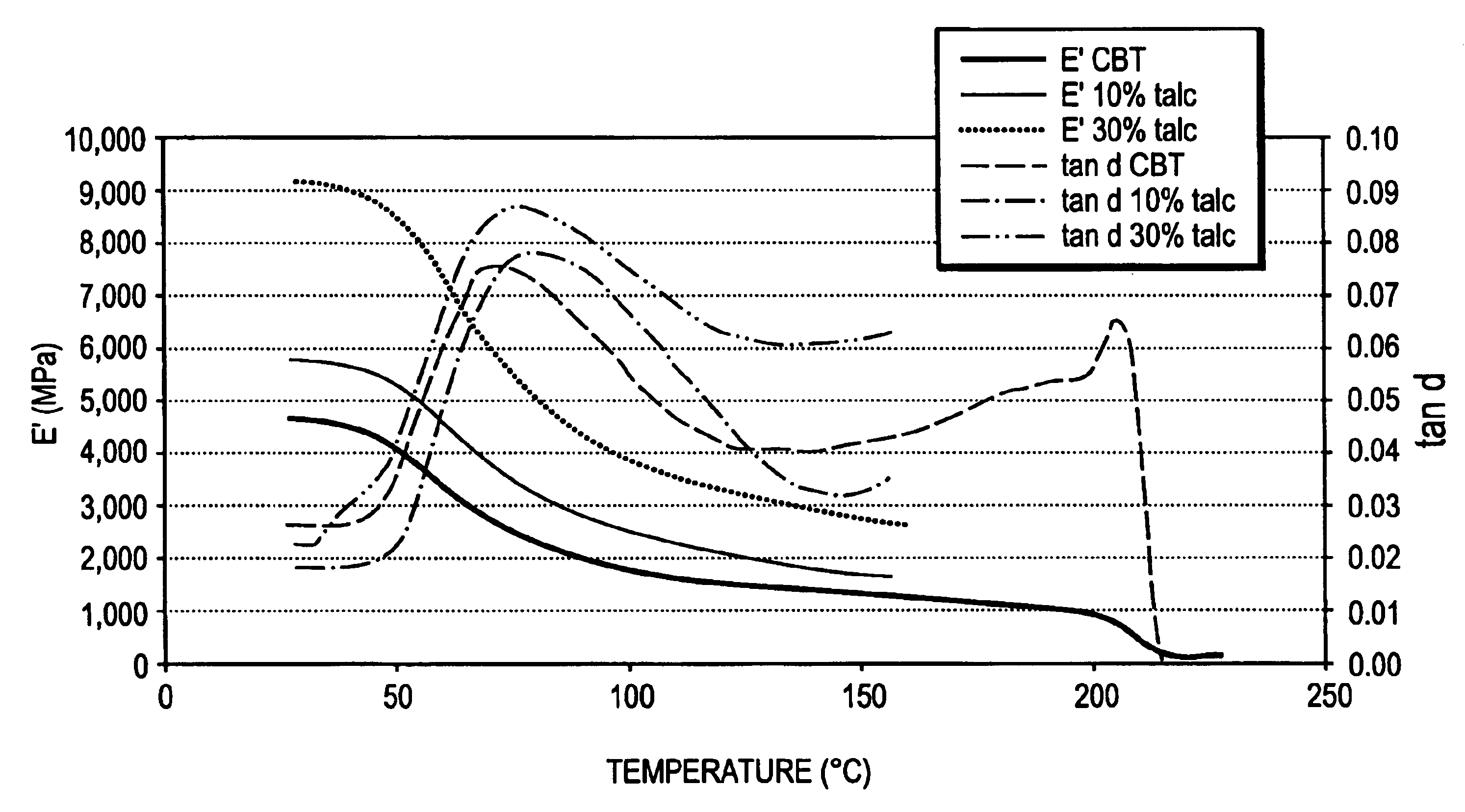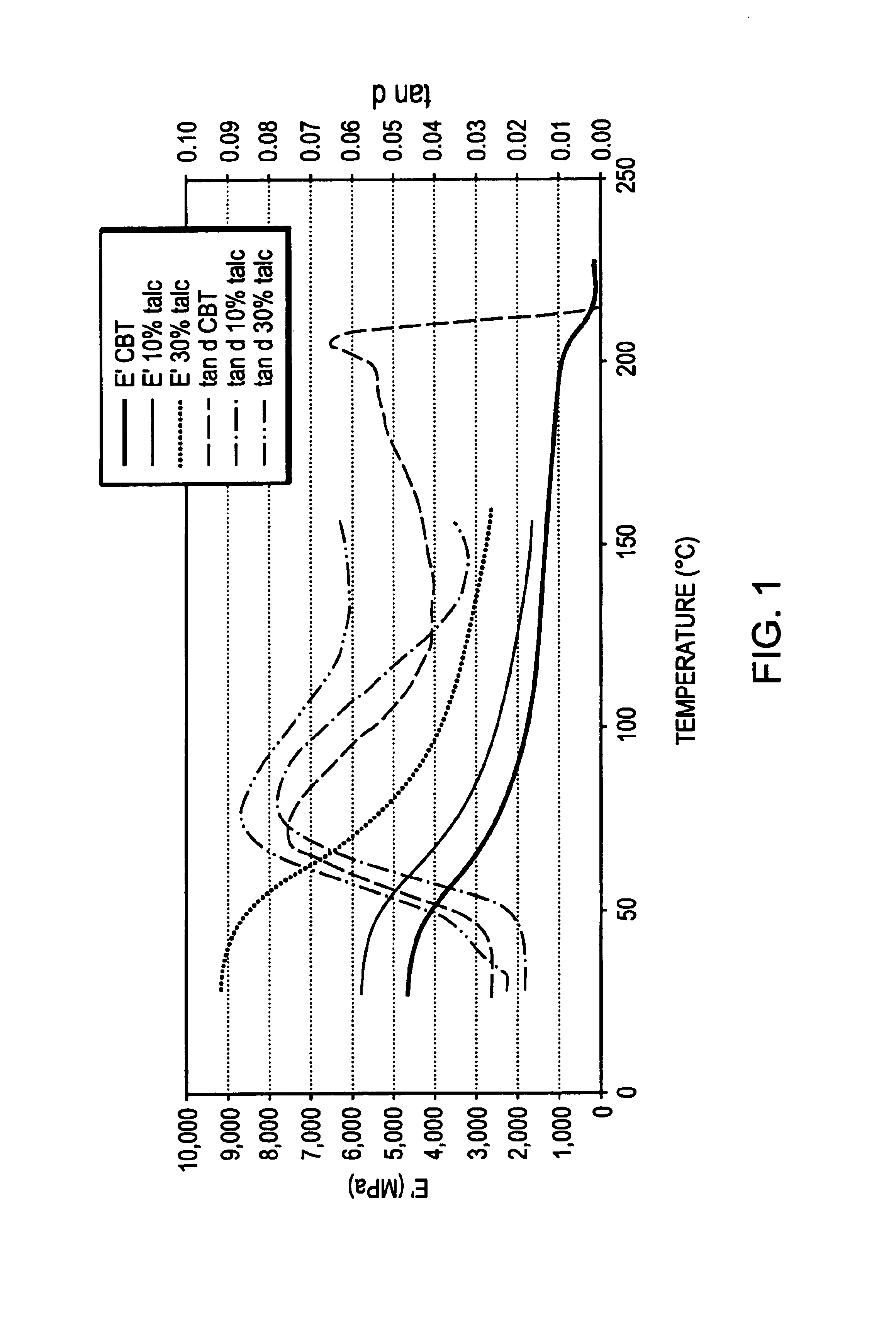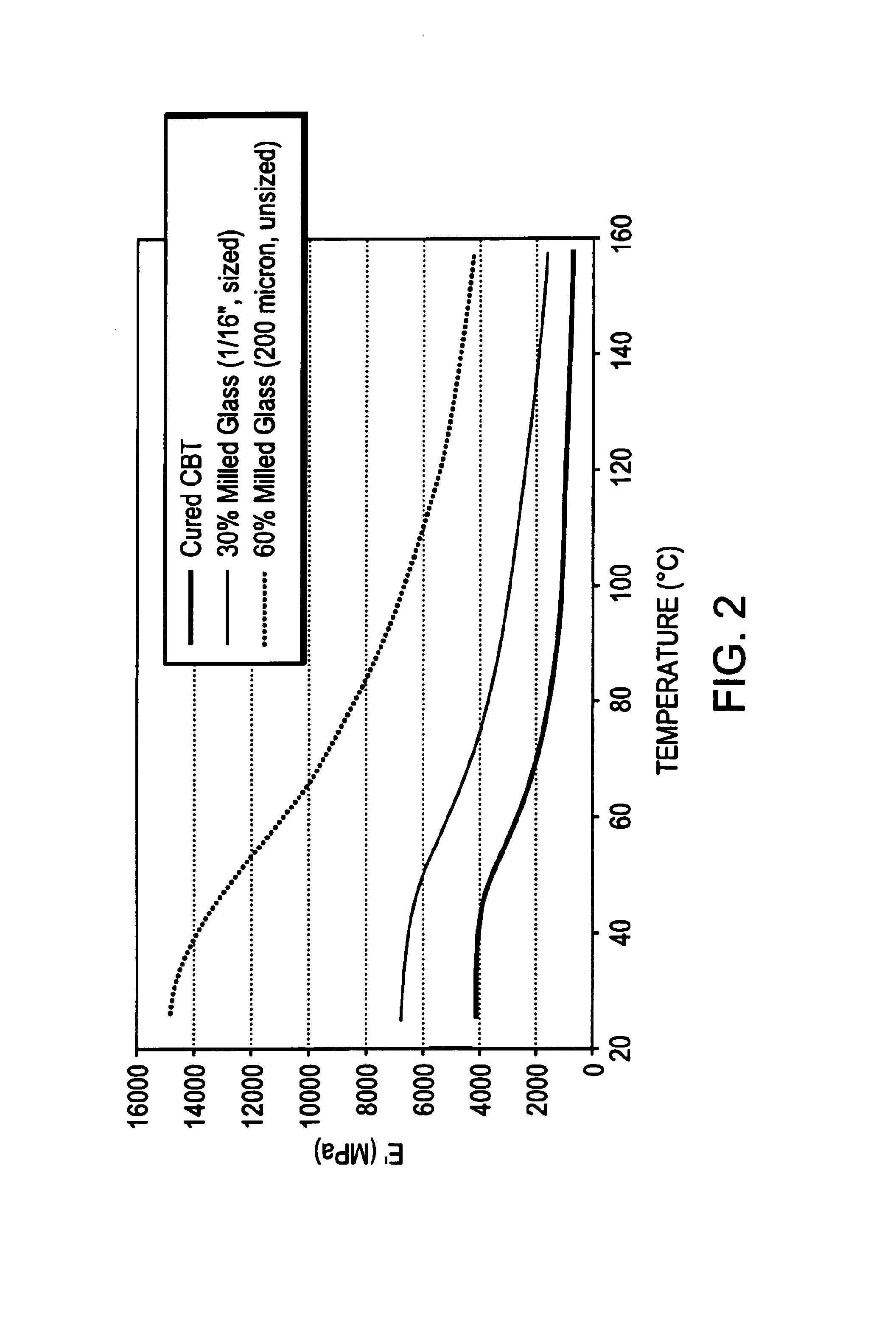Intimate physical mixtures containing macrocyclic polyester oligomer and filler
a technology of macrocyclic polyester and filler, which is applied in the field of thermoplastics and articles, can solve the problems of ductility, impact strength and toughness, and the use of high-aspect-ratio fillers, and the negative impact of fillers on other properties of the resulting polymer composition,
- Summary
- Abstract
- Description
- Claims
- Application Information
AI Technical Summary
Benefits of technology
Problems solved by technology
Method used
Image
Examples
experimental examples
IV. Experimental Examples
[0082]Examples 1-12 illustrate methods of preparing a stable, one-part, ready-to-polymerize, intimate physical mixture comprising an MPO, a filler, and a polymerization catalyst. Properties of the polymer compositions resulting from the polymerization of these mixtures are shown in Tables 2-5 and in FIGS. 1-3.
[0083]Examples 1-12 employ the use of macrocyclic polyester oligomers manufactured by Cyclics Corporation of Schenectady, N.Y., that are primarily composed of macrocyclic poly(1,4-butylene terephthalate) oligomer. The MPO used in Examples 1-3 is referred to herein as MPO-2 and contains about 93 mol. % (1,4-butylene terephthalate) units and about 7 mol. % (2,2′-oxydiethylene terephthalate) units. The MPO used in Examples 4-12 is referred to herein as MPO-3 and contains about 100 mol. % (1,4-butylene terephthalate) units. MPO-2 and MPO-3 each contain about 40.2 wt. % dimer species, about 39.0 wt. % trimer species, about 5.5 wt. % tetramer species, about 1...
example 1
[0085]A first formulation containing 5 wt. % anhydrous magnesium silicate was prepared by melt-mixing 95.0 grams of MPO-2), 5.0 grams of Ultra Talc 609 (manufactured by Barretts Minerals Inc. of Barretts, MT), and 0.20 grams of stabilizer Irganox 1010 (CAS number 6683-19-8, manufactured by Ciba-Geigy Corp. of Ardsley, N.Y.). The three components were added in finely pulverized form into a 250-ml, three-neck flask fitted with a vacuum adapter and a magnetic stirrer. The flask was first flushed with argon and then heated under vacuum at 100° C. to dry the mixture. After an hour of drying, the flask was heated under vacuum in an oil bath maintained at 165° C. The mixture completely melted within about 30 minutes to form a homogeneous, clear liquid, indicating dissolution of the anhydrous magnesium silicate in the mixture. The flask was then transferred to another oil bath at 150° C., and stirred for 6 minutes as argon gas was introduced into the flask. Butyltin chloride dihydroxide pow...
examples 2 and 3
[0086]Second and third formulations containing 10 wt. % and 20 wt. % magnesium silicate, respectively, were prepared following the procedures of Example 1. A control mixture containing no magnesium silicate was also prepared.
[0087]The ready-to-polymerize mixtures obtained in Examples 1-3 were polymerized under argon atmosphere by heating at 190° C. for 60 minutes in a rectangular mold. The resulting polymers were analyzed by gel permeation chromatography for molecular weight and polymerization conversion. The polymerization rate, ultimate percent conversion, and average polymer molecular weights were not significantly affected by the addition of the silicate. The results, as determined by gel permeation chromatography using polystyrene standards, are shown in Table 2.
[0088]
TABLE 2Polymerization of Talc-filled MPO MixturesMol. WeightTalcConversionGPC peakSample(wt. %)(%)(Daltons)Control091.7138,0001595.8121,00021097.2112,00032092.1117,000
[0089]Shear modulus and Young's modulus were o...
PUM
| Property | Measurement | Unit |
|---|---|---|
| weight percent | aaaaa | aaaaa |
| weight percent | aaaaa | aaaaa |
| weight percent | aaaaa | aaaaa |
Abstract
Description
Claims
Application Information
 Login to View More
Login to View More - R&D
- Intellectual Property
- Life Sciences
- Materials
- Tech Scout
- Unparalleled Data Quality
- Higher Quality Content
- 60% Fewer Hallucinations
Browse by: Latest US Patents, China's latest patents, Technical Efficacy Thesaurus, Application Domain, Technology Topic, Popular Technical Reports.
© 2025 PatSnap. All rights reserved.Legal|Privacy policy|Modern Slavery Act Transparency Statement|Sitemap|About US| Contact US: help@patsnap.com



